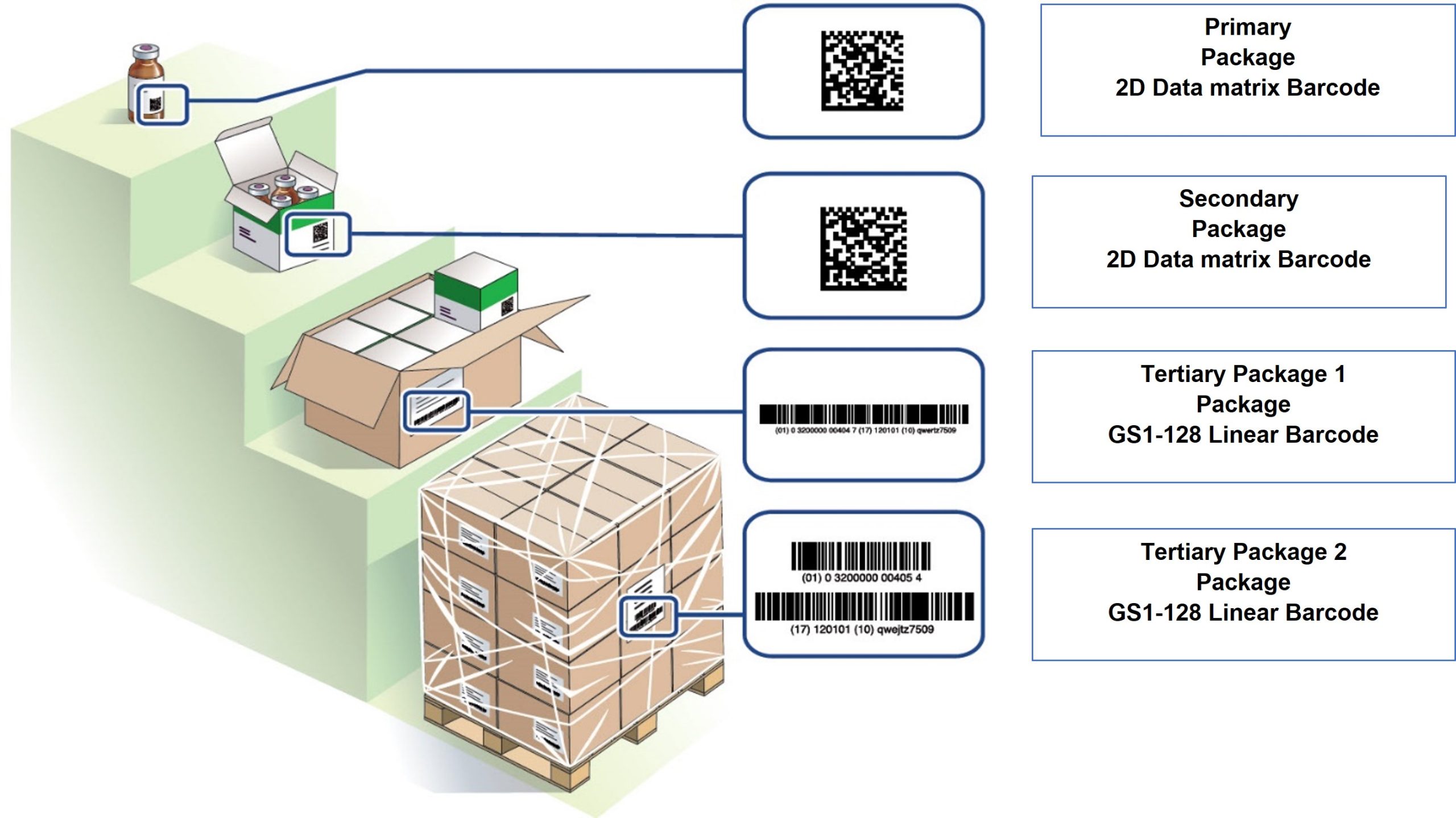GS1 Standards – key enabler for interoperability
The GS1 system of standards provides a comprehensive set of standards to identify, capture and share information about objects throughout their lifecycle, providing the core foundation for interoperability.
Supply chain partners identify business objects and locations using standardised identifiers and capture the object’s identity and any additional attributes (e.g., the expiry date) that have been encoded in a standard manner in a data carrier (barcodes, RFID), this ensures the object can be read automatically and consistently throughout the supply chain. Also, the time (when), location (where) and other data (who and why) are recorded.

When supply chain partners use a common language for identification and data capture, the gathered data is refined and enhanced within the business context, to transform it into data that can be shared using standardised semantics, in a standardised format, and using standard exchange protocols.
How is interoperability for an end-to-end traceability system achieved?
Interoperability refers to the basic ability of different computerized systems to readily connect and communicate with one another, even if they were developed as part of different ecosystems. To ensure interoperability between different ecosystems, these requirements must be met:
GS1 standards for unique identification (e.g., batch/lot, Global Trade Item Number® (GTIN®), serialized GTIN, Serial Shipping Container Code (SSCC), Global Location and more) can enable traceability within business applications to exist and ease interoperability.
Electronic Product Code Information System (EPCIS) is the standardized event data to exchange and share event data among all trading partners as objects or products move within the supply chain.


